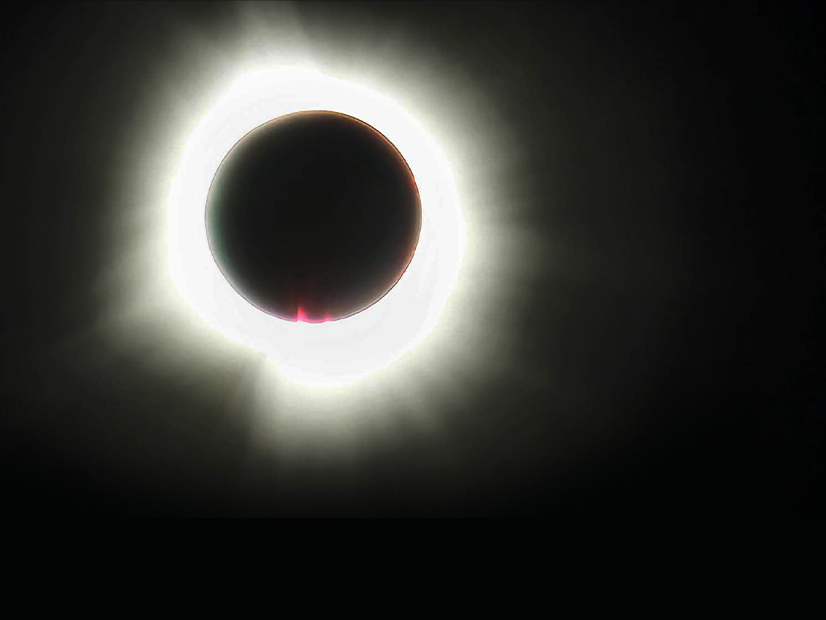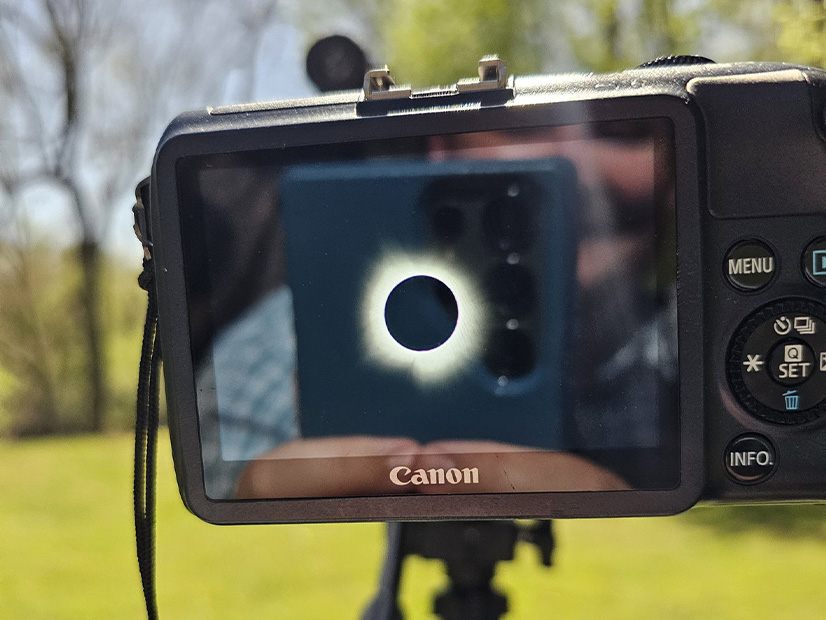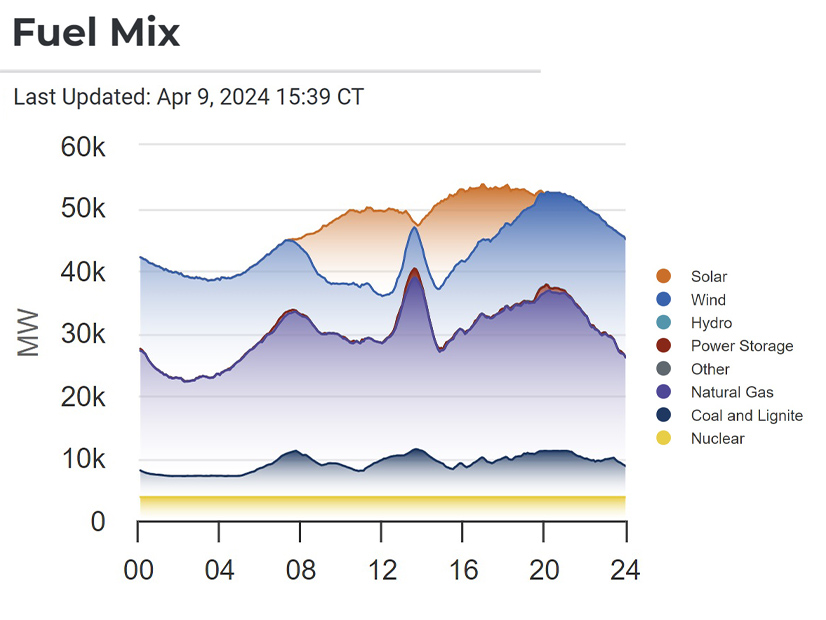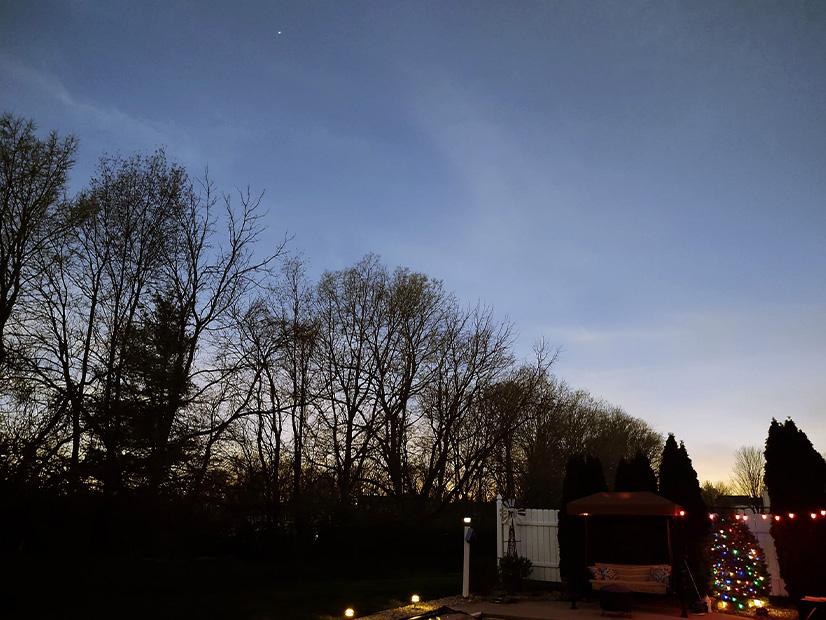Grid operators reported zero issues managing the bulk electric system April 8 as a total eclipse briefly shaded solar panels across ISO-NE, NYISO, MISO, SPP and ERCOT.
MISO reported that it and its members “successfully managed” grid conditions as the solar eclipse moved through its footprint, cutting a path of totality over its offices in Little Rock, Ark., around 1:51 p.m. CT, and Carmel, Ind., at 3:06 p.m. ET.
The grid operator said it increased its short-term, 30-minute reserves, regulation reserves and ramp requirements to manage the eclipse’s impacts. MISO said prior to the eclipse, its solar fleet was producing nearly 4 GW, which dropped to just below 300 MW during totality and returned to about 3.8 GW afterwards.
“We accessed our increased regulation reserves to manage the rapid changes in system conditions,” MISO spokesperson Brandon Morris said in an emailed statement to RTO Insider.
ERCOT said it operated normally through reduced solar generation. Its solar fleet slowed to about 800 MW around 1:30 p.m. CT. Fifteen minutes earlier, ERCOT recorded a 5-GW contribution from its solar fleet. By 2 p.m. CT, ERCOT’s solar production was back to 5 GW and spiked to more than 13 GW by 3 p.m. CT, supplying more than 25% of the fuel mix. ERCOT relied on a combination of natural gas, wind production and energy storage during the temporary darkness.
ISO-NE said operations went smoothly as the moon crossed in front of the sun in New England. Preliminary estimates from the system operator indicate the eclipse led to about a 4-GW reduction in solar production, with 3 to 3.5 GW coming from behind-the-meter sources and 650 MW from grid-connected installations.
“Our preparations paid dividends. The work done ahead of time to understand how the eclipse would impact the regional power system was crucial to a smooth operating day,” said Steven Gould, ISO-NE’s director of operations.
NYISO said it maintained reliable operations while the sun’s corona was observable to crowds. Prior to the eclipse, NYISO said its front-of-meter and behind-the-meter solar resources collectively generated a little more than 3 GW. When New York went dark around 3:30 p.m. ET, solar output dwindled to just under 600 MW. By 4 p.m. ET, solar generation in NYISO had ramped back up to 1.2 GW.
NYISO said it dispatched thermal generation and hydropower to make up for the loss of solar output.
Before the eclipse, SPP said it expected no significant grid impacts and a dip in grid-connected and distributed solar generation no greater than 1 GW. It said it had ample output from other types of generation available to compensate. SPP said most of its footprint experienced 50 to 75% eclipse coverage. Afterward, SPP shared photos of the “mesmerizing” event captured by its employees on X.
Jon Lamson and Tom Kleckner contributed to this report.






